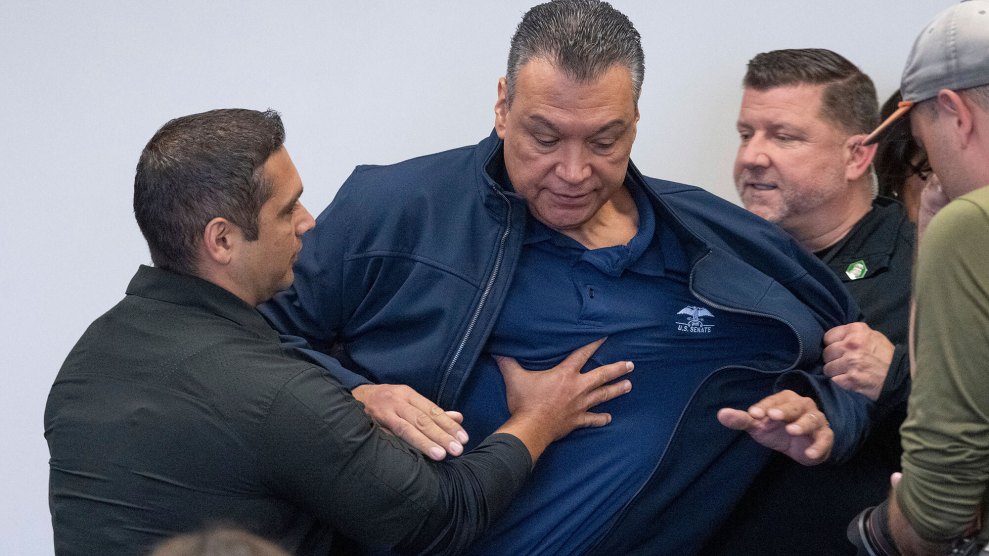Sure, everyone knows that America’s military is hunkered down in the Middle East, but what’s it doing in the rest of the world? Quite a lot, as it turns out. The Pentagon is several years into its biggest overseas base reshuffling since the Cold War, a realignment that is expected to cost US taxpayers $20 billion.
Given these rapid changes, our intrepid editorial and technical teams embarked on a yearlong project entitled “Mission Creep: US Military Presence Worldwide” to find out what our soldiers are up to, country by country. At its heart is this interactive world map that lets viewers zoom in to almost any place on the planet to learn about US involvement there. I’m already hearing it described as “addictive,” and I highly doubt so much up-to-date information about America’s overseas military presence has ever been available in one place in a fashion so accessible to casual readers. So what if my wife and children no longer recognize me. It’s finished! (See more highlights below.)
Among the interesting facts and trends you’ll find in the package:
-Worldwide, US military bases occupy 46,566 square miles, a land area larger than North Korea.
– Nations round the world spend roughly $1.2 trillion on defense. Nearly half of the total is expended by the United States. The federal government spent $587 billion on defense in fiscal 2008, including emergency war funding. By contrast it spent $62 billion on education and $5 billion on Social Security that year.
-The Pentagon acknowledges 5,429 US military installations, of which 761 are located in 39 foreign countries and territories. Of the foreign sites, 30 are defined as medium or large—a medium site would cost at least $888 million to replace; a large one at least $1.65 billion. Staggering numbers, but they still understate the true US footprint: The Pentagon doesn’t acknowledge all of its foreign bases, and many countries have opened up their own bases for use by American troops. Moreover, the Defense Department reports suspiciously low troop counts for countries known to be abuzz with US military activity, such as Jordan, Kuwait, Pakistan, and the Philippines.
-Nearly 1 in 5 acknowledged US military “facilities” (buildings, roads, bridges, weapons ranges, etc.) are located on foreign soil. To replace all 102,376 of the Pentagon’s foreign facilities would cost at least $119 billion. To replace all of its facilities, foreign and domestic, would cost at least $586 billion.
– Foreign training missions are a key part of the new Pentagon strategy. The US spends large amounts to train and equip foreign troops—the Bush administration requested $4.5 billion for this purpose in 2008. Rotating troops in and out frequently lets the US keep tabs on a region without drawing the public opposition a permanent base would—opposition that contributor Chalmers Johnson details in “America’s Unwelcome Advances.” And, as contributor Herbert Docena demonstrates in “US Troops Retake the Dragon’s Lair,” the new strategy has allowed the Pentagon to quietly rebuild a major strategic hub in the Philippines, whose senators sent US troops packing in 1991.
– America routinely buys its access overseas through humanitarian and military aid. As Josh Kurlantzick reports in our September/October issue, 22 percent of US foreign aid now flows directly through the Pentagon. Conversely, the US Agency for International Development funds military training in a number of countries. From weapons to cash to extending runways and building medical clinics, the Pentagon is there to help—in exchange for use of local bases, overflight rights, port privileges, freedom of movement, and legal immunity for US troops.
Adding to the package, contributor Frida Berrigan gives us an in-depth look at US status of forces negotiations (“How to Stay in Iraq for 1,000 Years.”), while author David Vine brings us up to speed on “a raging legal battle over the British island of Diego Garcia, where the US has a major base. In addition, Mother Jones senior editor Michael Mechanic interviews former national security adviser “Zbigniew Brzezinski on US basing and foreign policy. In the upcoming weeks we’ll roll out dispatches on related topics from more than a dozen military scholars and thinkers, all of which will be available at motherjones.com/military.

















